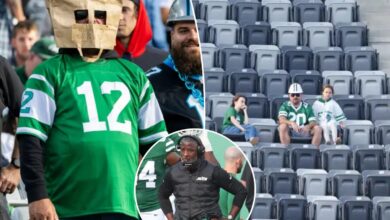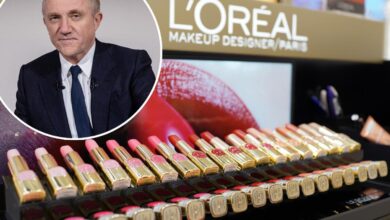Why Balsam Hill Christmas trees are worth the investment
Is it beginning to look a lot like Christmas?
I grew up measuring Christmas by the tree. Cut-your-own, grocery-lot deals, even in my young adult years, Manhattan bodega carry-aways à la “When Harry Met Sally.” I take the tree very seriously.
No tree meant the season hadn’t started.
Today I’m closer to Billy Crystal’s actual age in said holiday classic, plus I travel more, host more and share the living room with a couple curious dogs.
The charm of watering and a needle duty have worn off. I need the look without the mess, which is how I landed on Balsam Hill Christmas trees.
I wasn’t anti-artificial so much as pro-tradition. However, once I did the merry math on time, needles and disposal, I decided it was worth it to test the brand I kept hearing about.
If an artificial tree were going to convert me, it needed to look real enough to fool my blurry-eyed nieces on Christmas morning (and maybe their blurry-eyed parents on Christmas Eve) and hold up to years of packing and unpacking and decorating.
If you had told me, even just a few years ago, I’d be trading in a freshly cut tree for a flipping fake fir, I’d have said you were out of your mind. Yet, here we are.

The tree I chose is the 7.5-inch BH Balsam Fir Flip Tree. That’s right – if I’m going artificial, I’m going to do it right. I want something that not only looks real but is really easy, too.
Outside branches use the brand’s True Needle foliage for texture and color variation. Classic Needles sit deeper in the tree to add fullness.
I also found this to be the case with another major artificial Christmas tree I reviewed from the King of Christmas premium collection. The mix sells the illusion.
Pros:
- This tree looks incredibly lifelike
- No watering, no vacuuming, low fire risk
- The pre-lit option made setup easier and resulted in fewer naughty list-worthy words trying to untangle stupid strings of lights
- So easy to unpack, set up, break down, pack up, and move to storage, thanks to the flip design and rolling castor base
- The 7.5-foot height is an excellent size for any room in the future, allowing me to reuse it for many years, which should save money
Cons:
- No signature sappy scent
- Trees are not recyclable per the ACTA (but the brand is working with partners on a local level to start programs)
- Short-term cost – This tree was not cheap (however, it certainly wasn’t cheaply made)
- PVC and other chemicals used may be harmful to people and the environment, which is just a fact to consider when looking into this or any artificial tree

There are three levels of realism for Balsam Hill Christmas trees:
- Traditional: These are the types of trees most people are familiar with. This style is generally more cost-effective, and Balsam Hill uses 100% polyvinyl chloride (PVC) to create what it calls “Classic Needle” foliage.
- Realistic: Balsam Hill’s Realistic trees use up to 65% polyethylene (PE) to create what the brand calls “True Needle” foliage. The remainder of the tree foliage is Classic Needle, mostly on the interior and close to the bottom, which helps achieve the realism you want with the budget you have.
- Most Realistic: When you think of Balsam Hill, these are the trees that come to mind. These trees use more than 65% True Needle foliage for outstanding realism, with Classic Needles deeper in the tree near the trunk to add fullness and depth.
If you aren’t sure where to start, it’s OK. I wasn’t quite sure either. Given this is what Balsam Hill is known for, it should be no surprise that it has a comprehensive, easy-to-use guide on how to pick a tree.
When perusing the Balsam Hill website, the 7.5-foot pre-lit Balsam Fir Flip Tree, which falls within the “Most Realistic” category, seemed absolutely perfect.


The setup was surprisingly easy. I started by rolling the sophisticatedly secured tree out of the box. I was delivered upright, so all that was required was releasing the clasp that held the bagged tree sturdy and in place.
Once I had the tree out of the box and where I wanted it, I quickly ripped open the velcro to reveal what appeared to be a broken Christmas tree. It seemed much wider at the top than the bottom, and the wire arms and Classic needles gave me fake tree vibes.

So, there’s half the tree; where’s the rest, you ask? Packaged carefully in its own Rudolph red velcro bag, specially designed to keep the top portion of the tree safe and shaped.
I opened the smaller bag with another rip of velcro and quickly inserted its trunk into the opening of the base, and that was it.
I got a pre-lit tree, which required the additional step of connecting the power when attaching the top and base, but after that, I was just about done.

The last step, which is more so for first-timers, is to fluff and shape the tree into an organic appearance that reflects the realistic look of the full greenery.
In case you’re wondering, Balsam Hill also accounted for that by including not one, but two pairs of gloves that make digging deep in the branches to shape them without worrying about getting poked by sharp “needles.”
Well, if I thought putting this tree up was easy, I was in for a treat when it came to taking it down. Sadly, we laypeople still need to take all the ornaments off and pack them in our coordinated Ornament Storage Boxes, Holiday Rubbermaid bins, and other creative storage containers.
However, once that part of the breakdown is complete, forget about dealing with unruly strings of lights, dry, sharp needles, or dumping gloopy water from a rusty tree stand. This tree costs a premium for a reason. The design removes the actual work from having a tree so that all you have to do is enjoy it.
Unplug the single string of lights, remove the top third of the tree and place it in the red velcro bag (or this handy rolling Christmas tree storage box). Next, unlock the base wheels and give a good thrust – like magic, it flips upside down and assumes its at-ease position until next year.
The one element that was a little tricky – I hesitate even to go as far as to say difficult – was getting the big red bag wrapped and velcroed around the base of the tree. Once it has been shaped and fluffed up enough for celebration, it didn’t want to fit in the bag as well as before.

If you are in the market for an artificial Christmas tree, I highly recommend you start with the best there is — Balsam Hill trees.
Decorating this lifelike tree makes me feel like I have been accepted to a Christmas club I didn’t know I needed.
I’m looking forward to plugging in my favorite Bath and Body Works Fresh Balsam Wallflower (you heard me – they’re the best), cleaning up with the limited edition Homecourt Balsam scent cleaning products (my latest obsession), lighting a real fire and cuddling up on the couch for a long winter’s night.
It’s easy to say that it doesn’t matter how realistic your Christmas tree looks, but once you have another cheap plastic tree, it will look like another cheap plastic tree, and those just don’t look nearly as good or last nearly as long as a durable tree built with future family festivities in mind.
If you’re looking for a cheap throwaway tree, keep looking. However, if you’re looking for the last tree, you’ll ever need to buy, welcome to the club.
The Balsam Hill tree that’s right for you largely depends on your budget. Trees within the Most Realistic category range from $349 to nearly $11,000. Realistic trees start from $499 and reach $10,000. Traditional-style trees start at $299 to $3,200.
Something to keep in mind is that the taller the tree, the more costly it will be. Some of Balsam Hill’s Realistic and Most Realistic trees can reach 18 feet tall, while Traditional trees top out at 15 feet.
Additionally, elements such as lights and the proprietary flip design of some trees add to the cost. However, there is no need to feel like you’ll have to spend three months’ mortgage to afford one artificial (looking) Christmas tree. Plenty of quality trees at an average height of 7 to 7.5 feet, from Traditional to Most Realistic, come in under $1,000.
I found a few of the best Balsam Hill Artificial Christmas trees 7-feet or over for less than $1,000:

Height: 7.5 feet | Shape: Full tree | Tree type: Classic Blue Spruce | Weight: 50.4 pounds | Color: Green | Lights: Clear lights | Stand included

Height: 7 Feet | Shape: Full tree | Tree: Vancouver Spruce | Color: Green | Lights: Clear lights | Includes tree stand

Height: 6.5 Feet | Shape: Slim tree | Tree type: Berkshire | Lights: LED clear lights | Color: Green | Includes tree stand

Height: 7 feet | Shape: Full tree | Tree type: Spruce | Lights: Clear LED lights or unlit | Tree stand included

Height: 6.5 Feet | Shape: Sparse tree | Tree type: n/a | Lights: LED clear fairy lights | Color: Green | Includes tree stand

Height: 6.5 feet and 7.5 feet | Shape: Stratford | Tree type: Spruce | Lights: Unlit | Color: Green | Includes tree stand

Height: 7.5 Feet | Shape: Full tree | Tree type: Fir | Lights: LED clear lights | Color: Frosted fir trees | Includes tree stand
For over 200 years, the New York Post has been America’s go-to source for bold news, engaging stories, in-depth reporting, and now, insightful shopping guidance. We’re not just thorough reporters – we sift through mountains of information, test and compare products, and consult experts on any topics we aren’t already schooled specialists in to deliver useful, realistic product recommendations based on our extensive and hands-on analysis. Here at The Post, we’re known for being brutally honest – we clearly label partnership content, and whether we receive anything from affiliate links, so you always know where we stand. We routinely update content to reflect current research and expert advice, provide context (and wit) and ensure our links work. Please note that deals can expire, and all prices are subject to change.
Credit to Nypost AND Peoples




